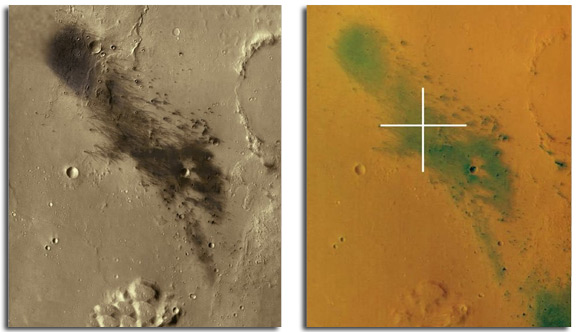| NASA’s
pictures of the Gusev crater using the Mars Global Surveyor, and
the more recent Odyssey mission using the Themis Camera reveal some
interesting data. The images taken show a dark mass that at first
glance seem to have characteristics that resemble some sort of planet
life. Then in 2004, the European Space Agency took it’s first full color image of the Gusev crater. What made the ESA image so immediately interesting was the fact that the “dark mass” features seen streaking portions of the floor of the 90-mile-wide Crater in the NASA imaging (left). Can now be seen in true color by ESA revealed by Mars Express (right) to be various amazing shades of green …. |
